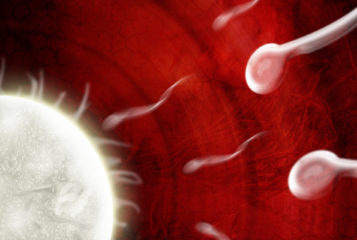Rat testicle stem cells that were frozen for 23 years and then grafted onto infertile mice, have been shown to produce viable sperm.
The possibility that pre-pubertal boys could freeze testicular tissue before cancer treatment that might affect their fertility so that it could be grafted on later and allow them to have children is being explored by scientists (see BioNews 1123). This is similar to the ovarian tissue grafts that are offered to pre-pubertal girls who are not able to undergo egg collection before treatment.
'The findings are critical in considering transplantation of stem cells from testis biopsies obtained from prepubertal boys undergoing cancer treatment for later use in re-establishing spermatogenesis following recovery,' said Professor Ralph Brinster, study lead and professor of reproductive physiology from Pennsylvania University Veterinary Medicine department.
While sperm can be collected and frozen prior to cancer treatment in adult males, this is not an option for pre-pubescent boys, who cannot yet produce sperm.
In this study, published in PLOS Biology, testicular stem cells taken from adult rats and frozen 23 years ago were reintroduced into infertile mice that had been treated with a drug that killed their sperm-making cells. Researchers also carried out the experiment with testicular cells frozen between one to four months ago and with fresh testicular cells. They found that just five to ten percent of these long-term frozen cells were viable, but that after being implanted into mice did differentiate into viable sperm, albeit at a lower rate than fresh or briefly frozen cells. However, even the low sperm count is found to be encouraging if it works in humans who could undergo IVF.
'You really only need one viable sperm to succeed,' Dr Eoin Whelan, one of the authors of the study, explained.
Although the rat has long been an important animal model to compare to human physiology, and the process of rat male germ cells differentiation is well understood, it is unclear yet if the results will translate to humans. In addition, the study investigated isolated cells taken from adult rats, while fertility clinics take whole tissue samples from children who have not yet gone through puberty.
Those children do not yet know the chance of success of testicular rejuvenation when they consent to undergoing procedures to take a tissue sample before cancer treatment. This is as they may not undergo reimplantation of the tissues for decades and it is not known how well it will survive or be able to differentiate and produce mature sperm.
'I think the research has broad relevance to freezing of all types of stem cells, which could undergo similar changes in gene regulation,' said Professor Brinster.
Sources and References
-
Rat testicle cells make sperm after being frozen for 23 years
-
Breakthrough study finds frozen testicular tissue can still make sperm 23 years later
-
Reestablishment of spermatogenesis after more than 20 years of cryopreservation of rat spermatogonial stem cells reveals an important impact in differentiation capacity
-
Frozen testicular tissue still viable after 20 years





Leave a Reply
You must be logged in to post a comment.